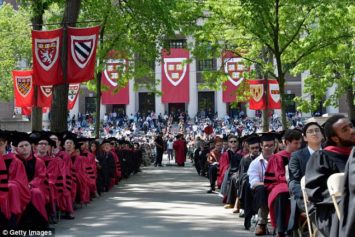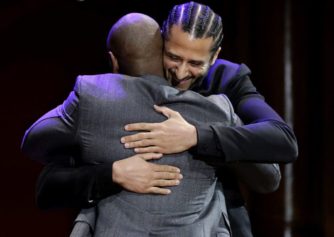
John Xiniwe and Albert Jonas, London Stereoscopic Company studios, 1891. Courtesy of © Hulton Archive/Getty Images
An exhibit debuting Wednesday at the Cooper Gallery of African & African-American Art at Harvard University features photographs of Blacks living in Victoria-era England.
Exhibit organizers describe the photos as “rare, striking and never-before-seen portraits of black citizens” in Britain in the late 19th and early 20th centuries. More than 100 pictures taken by professional photographers make up “Black Chronicles II,” which will be displayed through Dec. 11.
The Blacks depicted in the photos come from all walks of life. They include students, businessman, politicians and even royalty and celebrities such as boxing legend Peter Jackson. The subjects hailed from the Virgin Islands, Sierra Leone and Ethiopia, to name a few. Collectively, the photos challenge the idea that Blacks were largely invisible in England during the turn of the century.
“It changes our perceptions of the past, and can reverberate and change how we view the present,” Vera Ingrid Grant, Cooper Gallery director, told the Associated Press.
Researchers found the photos, or “trove of glass plates,” as the Associated Press describes them, stored at London’s Hulton Archive. Grant said the photos speak to a “missing chapter” in British history, one in which Blacks took part in everyday life and held at least some social influence.
“Many of the more than 100 photographs on display were taken for ‘cartes de visite,’ or calling cards: small, wildly popular postcards with an emblematic image and a splash of text,” according to the Associated Press. “Much like a modern Facebook profile, they were designed to sum up the essence of a person.”
London arts agency Autograph ABP will curate the exhibit, with Arts Council England and Getty Images as cosponsors. A representative of the agency said the display of photographs helps to resurrect long forgotten Blacks such as Ethiopian Prince Alemayehu, who came to Britain as a child after his father committed suicide when the British defeated his nation. Famous photographer Julia Margaret Cameron took the prince’s picture. The exhibit also includes a photo of Queen Victoria’s goddaughter Sarah Forbes Bonetta. Prior to their display last fall at Rivington Place in London, these photos had not been opened in 120 years.
“Their presence bears direct witness to Britain’s colonial and imperial history and the expansion of Empire,” according to ABP, which quotes the late cultural theorist Stuart Hall’s statement, “They are here because you were there. There is an umbilical connection. There is no understanding Englishness without understanding its imperial and colonial dimensions.”
The term “Black” in England is more broad than it is in the United States. It includes not just individuals of African origin but also of South Asian origin. Accordingly, when “Black Chronicles II” was exhibited in England, it also featured Indian photographic subjects such as Dhuleep Singh and Mussa Bhai. The exhibit came to be thanks to Autograph ABP’s dedication to finding archive images that have gone unnoticed or not un-researched because they were deemed insignificant. The photos in question, however, “are highly relevant to black representational politics and cultural history today,” ABP states.
They mark the first time a collection of Blacks in Britain prior to World War II were exhibited. It required original research and examinations of private collections to find them. Autograph ABP continues to search for the earliest photographic image of a Black person taken in the United Kingdom.
During a time when Blacks in the United States routinely make news headlines because of deadly police shootings, Grant said the exhibit reminds the public that the story of Africans throughout the Diaspora has not fully been told. She also said it raises the possibility that more photographs of Blacks in the United States during the turn of the century could turn up.
Famed photographer Carl van Vecthen, enamored with Black culture, took a number of photos of Harlem Renaissance writers such as Nella Larsen and Langston Hughes. He also snapped blues singer Bessie Smith in 1926. But photos of “ordinary” African Americans are likely harder to come by.
The cache of photos of Blacks in Britain before 1938 have Grant hoping that a similar photographic discovery can be made in the U.S.
“The presence of these [British] photographs says, ‘What’s waiting for us here?’” Grant said.


